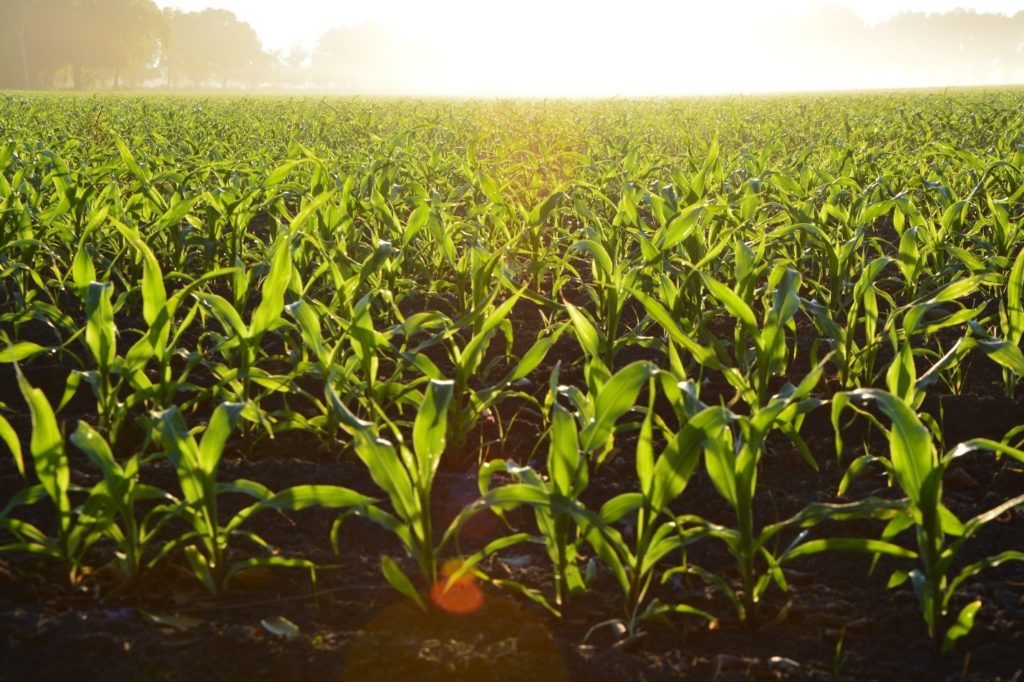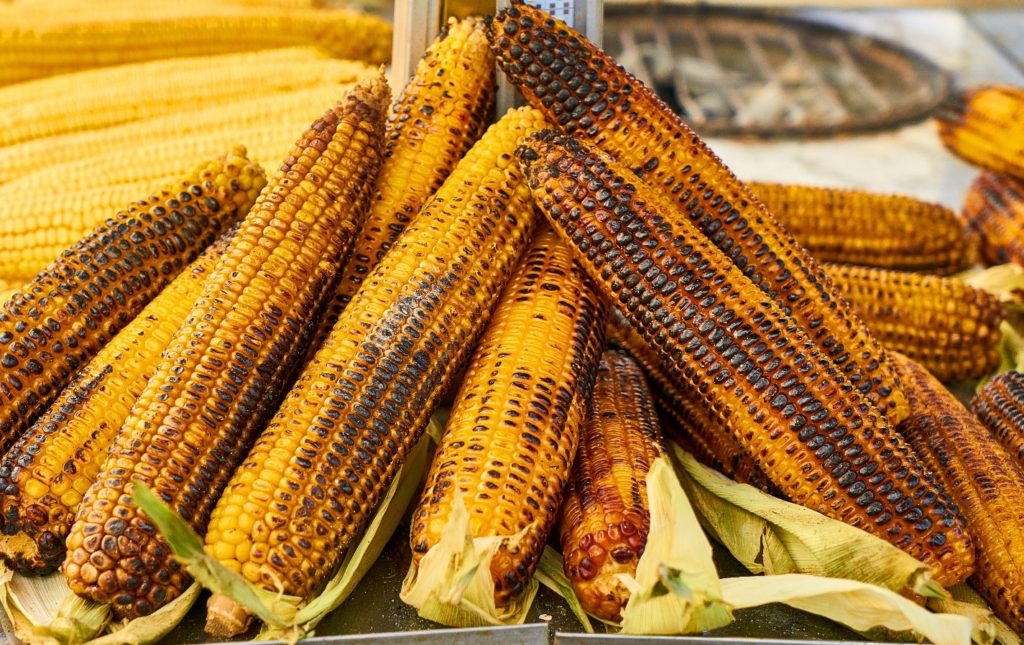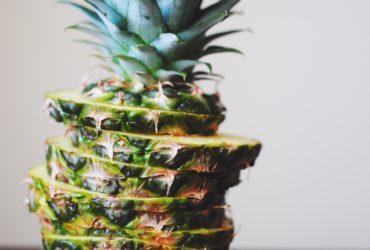By: Mustafa Yavuz
It may surprise you to learn that good old baker’s yeast, or Saccharomyces cerevisiae, has important functions beyond the kitchen! Not only does this yeast contribute to baking all manner of bread and pastries, but it can also produce ethanol from sugar (by means of fermentation) as an environmentally-friendly alternative fuel for vehicles. Indeed, for the last two decades, ethanol sourced from corn or sugar cane has been harnessed as biofuel with some commercial success to reduce our dependence on fossil fuels. In fact, it’s commonly seen as the E85 gasoline-ethanol mix found at most gasoline stations.
However, the use of ethanol fuel has been politically challenged on the basis that corn can and should be used as food. With a significant portion of the world suffering from extreme hunger and starvation, the ability to convert food sources into fuel is seen as a luxury by many political pundits. The Global Hunger Index, a tool initially created and published by the International Food Policy Research Institute, reported that the United States government’s support of corn ethanol production was a factor in a spike in food prices in 2011. Additionally, the energy used to grow, fertilize, harvest, and convert corn into ethanol is sourced from fossil fuels, and so some critics believe ethanol-based biofuel is actually a zero-sum game from a thermodynamic and economic perspective. Ethanol also needs to be blended with gasoline to burn well in current modern vehicles, so there is still a need for oil-based gasoline in the equation.

Photo by Alejandro Barrón at Pexels
Many questions remain. Should we use food sources for fuel production? How can we maintain our food supplies for future generations? What happens if our food supplies run out? And will this affect the market prices of food fit for human consumption?
The USDA published a report showing that 15 billion tons of corn bushels were converted into ethanol in 2018. While this may sound like a lot, there’s something off in this data. The reality is that ethanol is being overproduced, which means ethanol is currently in surplus!
You may stop and wonder, “Wait a minute. We’re using food sources for biofuel production, but the amount of ethanol being produced exceeds demand. Why?” The answer is simple – to subsidize corn farmers. Cutting down ethanol production would put corn farmers in economic peril. So, in truth, ethanol production provides corn farmers with an opportunity to sell their corn at a higher market return than to global food markets.
In response, technologies that produce higher-quality biofuels made from corn, such as isobutanol, butanol, and isoamyl alcohol, were developed. The biofuel industry is focused on generating these higher-value fuel products from corn products rather than ethanol due to their higher energy density, ease of transport, and stronger market return. These alternative biofuels also have better combustion qualities than ethanol and can be used in current car engines without the need to blend with gasoline. However, these projects still require significant commercial and scientific investment to bring to market and currently remain at bench and pilot scales.
Additionally, with the rise of synthetic biology, engineering yeast and other microbes has become more routine. As a result, biofuel production from non-food organic materials is now much easier.

Photo by Engin Akyurt at Pexels
The debate jolted scientists to consider other energy-rich carbon sources. Indeed, one of the positive outcomes of the debate has been the drive to discover alternative sources for biofuels and has led to the discovery of ethanol production from lignocellulose. Lignocellulose is the inedible fibrous waste material from corn and other plant husks, stalks, and chaff (also known as corn stover). After enzymatic treatment, these non-food feedstocks produce three components: lignin, hemicellulose, and cellulose. Further enzymatic treatment produces glucose and other simple sugars that can be fermented into ethanol. One of these other sugars, a five-carbon sugar known as xylose, is a good candidate for ethanol production. Since it can be acquired by hydrolysis of lignocellulosic biomass (which makes up not only corn stover, but also the readily available waste material of other crops and plant materials), xylose is essentially the second most abundant sugar in the world behind glucose.
This massive potential store of xylose locked inside cheap lignocellulose gave birth to the idea that yeast could be genetically modified to convert xylose into ethanol, which could mean we may not need to rely on food sources to produce biofuel. Yeast cannot naturally absorb and metabolize xylose to form ethanol, so a little genetic tweaking is necessary to give yeast the proper enzymatic machinery. To that end, yeast have been recently engineered to utilize xylose and transform the five-carbon sugar into fuel-grade ethanol at commercial scale. Although there are only a few lignocellulosic ethanol plants in the USA, Europe has been steadily launching lignocellulosic biofuel plants as a way of processing large amounts of corn and other crop wastes.
The production of lignocellulosic ethanol may help reduce the burden of diverting edible corn to fuel production. If this technology proves economically successful, hopefully this may end the “Food vs. Fuel” debate.
Or perhaps the debate is already over!
Come check out our Instagram and Facebook for more weekly updates, news, and food science! You know you want to.
References
Ha, Suk-Jin, Jonathan M. Galazka, Soo Rin Kim, Jin-Ho Choi, Xiaomin Yang, Jin-Ho Seo, N. Louise Glass, Jamie HD Cate, and Yong-Su Jin. “Engineered Saccharomyces cerevisiae capable of simultaneous cellobiose and xylose fermentation.” Proceedings of the National Academy of Sciences 108, no. 2 (2011): 504-509.
 Mustafa Yavuz | Linkedin
Mustafa Yavuz | Linkedin
Mustafa graduated with his M.S. from University of Illinois at Urbana-Champaign. Prior to his Master’s degree, he got a Bachelor’s degree in Food Engineering from Pamukkale University. He has worked in dairy farms and raisin plants as a production engineer. After a whirl winding industry career, he pursued an academic career and got a Teaching Assistant position in the Food Engineering Department at Karatekin University (Cankiri, Turkey). He is working on metabolic engineering through perturbation of microbes’ genomes. In his free time, he likes playing soccer, reading entrepreneurs’ books, discovering new food ventures, and indulging his taste buds with brewed tea from different parts of the world. He loves to discuss food microbiology, GMOs, novel food processes, meat and sugar alternatives, and definitely tea.






I wonder when you guys are going to cover the brazilian experiment on producing truck fuel from organic waste grom open trashlands!